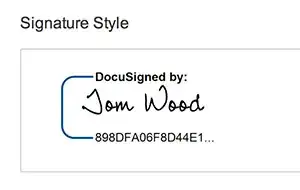Your question is a good one. The basic issue is that a digital signature is associated with digital data. And (equally importantly), access to the original digital data is required in order to verify the signature or signatures.
Therefore, the transmission medium needs to be digital.
Three answers:
The paper copy is a pointer to the real (digital) original
In this scenario, the paper print out contains a QR code to the real original, which is stored on a server. There is no need to worry about proving the validity of the paper print out since it is merely a pointer to the real original, which is stored on your server.
The recipient (the relying party) would always need to look up the server copy to see what it contains and to verify its standard digital signature.
You would want to put a minimum of information on the paper printout since you do not want a recipient to think that they can rely on the contents of the paper printout--they can't and shouldn't rely on it, it is not reliable.
The paper copy would simply say "The agreement was digitally signed on date by signer. Download the original and verify its signatures by using the QR code."
I would suggest that you not require any user names or passwords in addition to what is contained in the QR code itself.
The paper copy's data can be verified
In this case, you want the recipient to be able to verify the paper copy's data without needing an online version of the data. Unfortunately, regular print on paper is not digital (OCR is not 100% accurate or repeatable.)
So I would re-cast your question to be "How can I reliably transmit digital data using paper?"
There are answers for that these days including 3d bar codes and special OCR fonts. Depending on how much content there is, you would include the original text as a digitally signed pdf file in the QR code. You could include a copy of the original text on the page.
You would have the same problem as above--if the document's text is readable on the page, then verification that it is the exact same as the text that was signed is very difficult or impractical. On the other hand, disputes are infrequent. The printed version could be verified when necessary.
The paper copy is a representation of the signed data
These types of documents are accepted by relying parties all the time (they're called faxes). There is plenty of case law about the legal validity of a faxed document. The laws differ by state and country, so consult a local lawyer.
If a facsimile of the original document is acceptable and legal, then you can simply print out a representation of the digitally signed document. Hopefully a graphic signature was supplied by the digital signer. If not, you can create one using the signer's common name from their certificate and a script font. The important issue would be to include a reference number to enable the original, digitally signed document to be retrieved if needed by a challenge. DocuSign and other vendors do this. Note the reference number for the online version.

